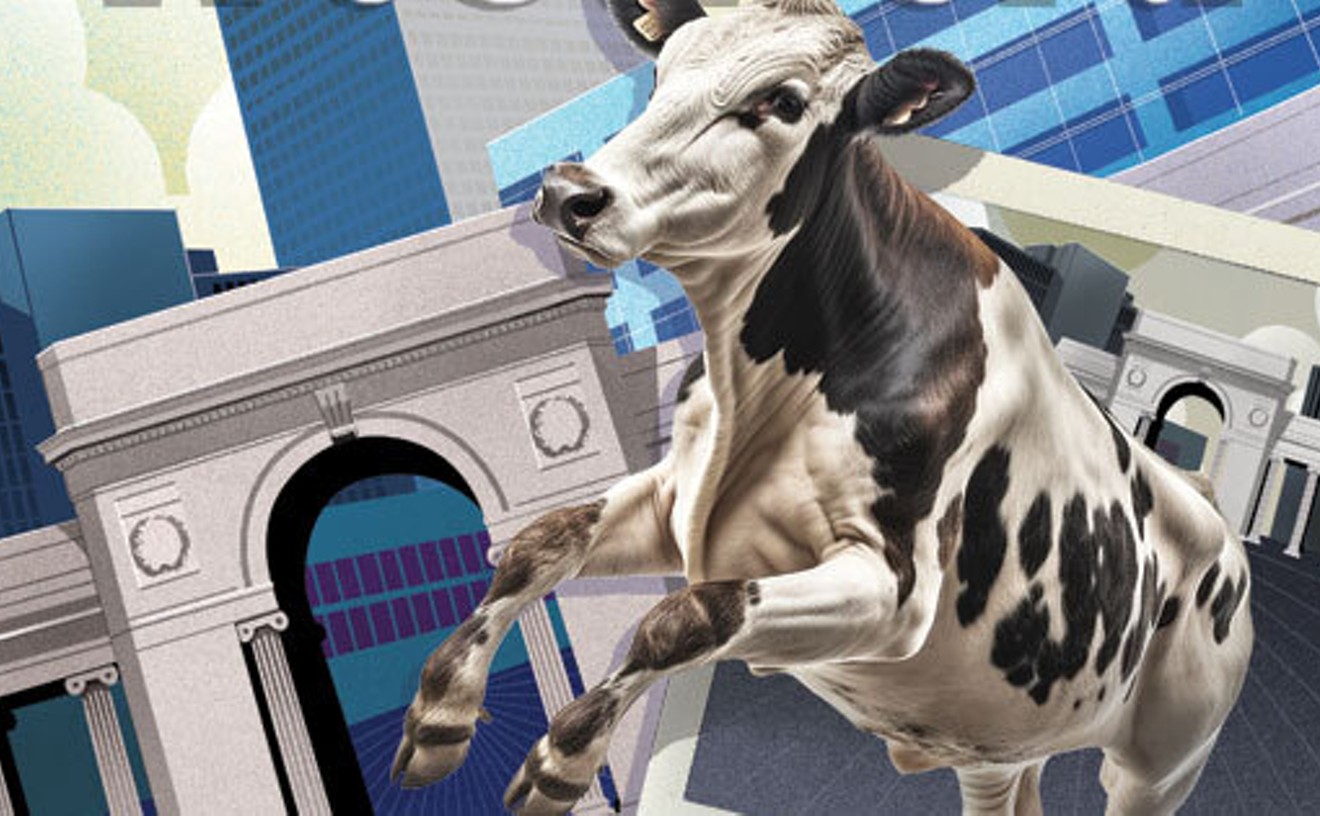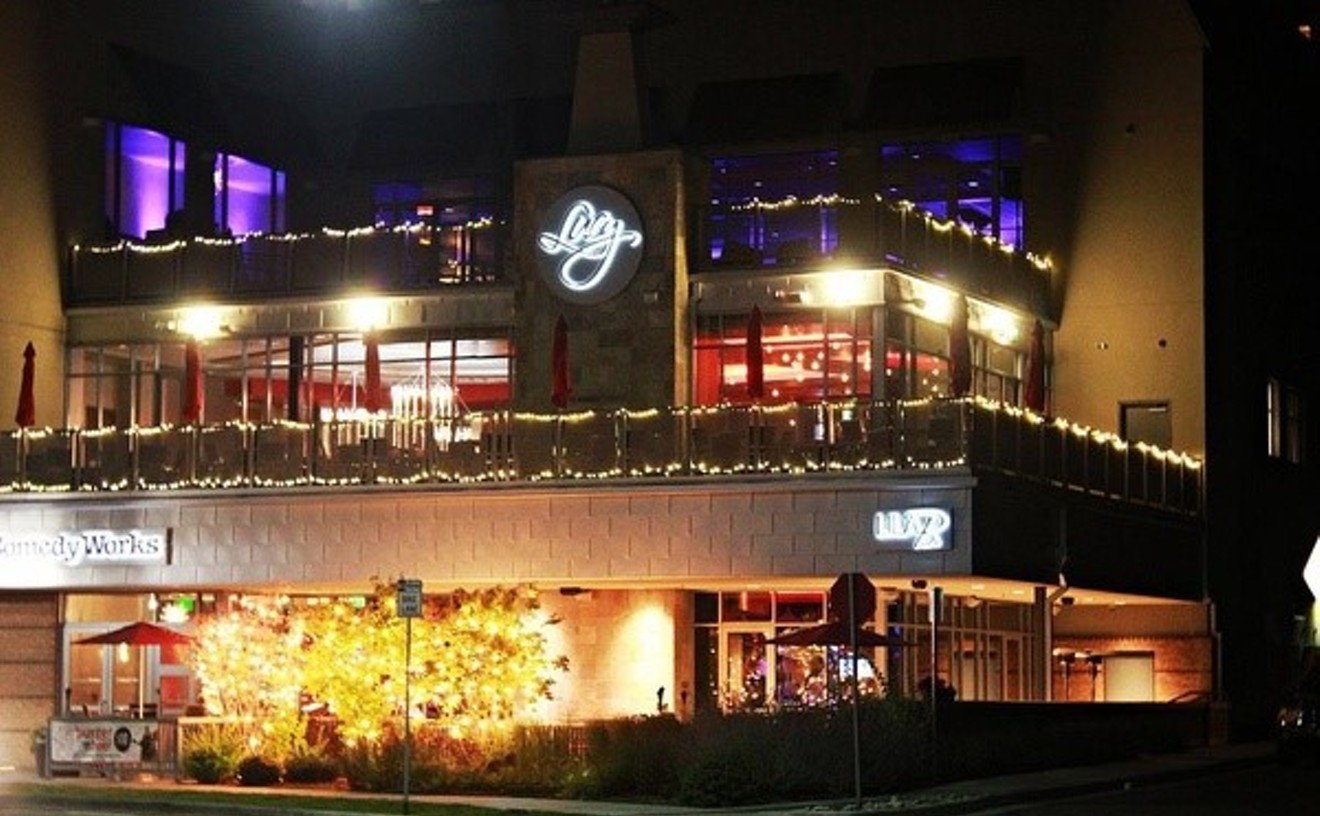So what happened? What went wrong? Here's my three-part theory.
See also: Review: These Four Artists Have Cracked the Code at the Sandra Phillips Gallery
First, Wesselmann was out of step with most of the other pop artists because he wasn't gay, and even more so, his work was pointedly not "camp." Not all of the pop artists were gay -- though Warhol, Johns and Rauschenberg were -- but the movement traded on this gay sensibility of camp. It's campy to turn a soup can into an icon or the American flag into a painting.In Wesselmann's case, a pop rendering of a reclining female nude (his chief claim to fame) doesn't have the same effect, because it's much more in line with the history of art: The reclining female nude has been a standard subject for artists for centuries, while soup cans and flags have not. This made Wesselmann's work more conservative from an art-historical perspective, regardless of the stylistic devices he used -- and for his part, he rejected being called a pop artist at all.
Second, these reclining female nudes, often with clearly expressed nipples, became more outré in the 1980s. The attack on the nude and on sexuality came from both sides: Feminists attacked the work because it was seen as sexist, while cultural conservatives attacked it for being salacious. And if that wasn't enough, AIDS, which was first identified in the 1980s, put an end to the free-love scene -- that Playboy/Penthouse world of the swinging bachelor that the Wesselmann nudes seem to reflect. (The man-about-town impression was wrong, as it turns out, since Wesselmann's subject was almost always his wife.)
Did I mention smoking? Second only to his buxom nudes, Wesselmann's paintings of smokers were his most significant works, and I don't need to tell you how anti-smoking most people have become. So his main subjects became, through the passage of time and changing values, out of step with the prevailing culture.
Third, Wesselmann made the decision to go for some big bucks by having prints cranked out by the thousands. These prints -- typically not nudes or smokers, but instead his riffs on modern art history -- flooded the market in the 1980s and '90s. And because they sold for only a few hundred dollars, and because his name was still recognized, they flew out the doors of galleries coast to coast.
When I laid my three-pronged theory on Denver Art Museum director Christoph Heinrich, he homed in on this last part. "Every nice lawyer or accountant's office seemed to have one in the '80s," says Heinrich, "and they only cost five or six hundred dollars apiece, so I think that affected his reputation more than anything else."These print sales may also have made him very rich, so that his fortune negatively affected his fame. How thoroughly unexpected.
All of these thoughts came to my mind when I went to see Beyond Pop: A Tom Wesselmann Retrospective, currently in its final weeks in the Anschutz Gallery in the Hamilton Building at the DAM. Most people I've run into haven't seen the show, and that's too bad, because all of the things I've laid out above don't in any way undermine the work itself. Rather, the show reveals that Wesselmann was a serious and committed artist who created a large body of coherent work over many decades, and a lot of it is really, really good.
The show is worth seeing, if only to check out Wesselmann's early collages from the late 1950s, which start off the show and presage his mature pop art of a few years later. This is also when he started to do the nudes, and many of the ideas initially expressed in them -- the featureless faces, the flat renditions of three dimensions -- can be seen here. I thought that "Starry Night Nude," from 1959, for instance, had the seeds of pop art in it. But it's basically a late example of classic Paris-based modernism, and that interest in modern art history -- especially the works of Matisse and Van Gogh -- is something that remains in the background of many of Wesselmann's full-blown pop works, and all of the great ones.
In 1961, he became famous with his "Great American Nude" paintings, and the DAM show includes several of these, both large and small, and a drawing. They're marvelous, and as the years have passed, they do seem to be much more the heirs of Matisse than the associates of Warhol. Take a look at Wesselmann's "Great American Nude, #20"; it could be a Matisse -- at first glance, anyway. And as the cherry on top, there's a Van Gogh hanging on the wall behind the updated salon odalisque.Then, dating from the late '60s and early '70s, clearly as an outgrowth of the nudes, are the smoking paintings, in which a perfectly formed mouth, the lips coated in red lipstick, is exhaling smoke. These may be his greatest paintings. "Smoker, 1 (Mouth, 12)" is a masterpiece of this type of work, and that's probably why it's owned by the Museum of Modern Art.
Starting a little earlier, in the mid-'60s, and continuing on through the time of the smoking paintings, are what Wesselmann called his "Still Life" series, which includes gigantic installations. One of these, "Still Life #60," from 1973, runs across and in front of an entire wall and is a showstopper. Wesselmann has captured a vanity-top scene, with a gigantic pair of sunglasses, a tube of lipstick and a bottle of nail polish -- the kinds of things that one could imagine the women in the "Great American Nude" series having around. The elements are completely separate and have been placed on the floor in layers, with the sunglasses at the back, the lipstick at the front, and the rest falling in between. In the next space are maquettes for the "Still Life" pieces, and these are incredibly charming.
Wesselmann's work from the 1980s through his death in 2004 is interesting but problematic, in that some of the imagery is the same or similar to that which became ubiquitously familiar through his prints. But there are also some revelations in this part of the show. Wesselmann was one of the first artists to employ computer technology, which is how his drawings were translated into metal wall sculptures, with a computer guiding a laser cutter to come up with the forms that are painted and assembled to create the composition.
A stunning late work that employs these techniques is "Screen Star," from 1999-2003; it's an enormous three-dimensional abstract made out of cut and painted aluminum. Though Wesselmann regarded it and other works of this type, along with the "Still Life" pieces, as paintings, "Screen Star" is actually a bas-relief sculpture that is meant to be seen only straight on, and not from the back or sides.Put on your post-feminist sensibilities and put aside your distaste for smoking or prints, and take a look at this show with an open mind. This will surely be the only opportunity we'll have to see Wesselmann's work in this kind of depth around here.
Beyond Pop: A Tom Wesselmann Retrospective, though September 12, at the Denver Art Museum, 100 West 14th Avenue Parkway, 720-865-5000, denverartmuseum.org.
Turn the page to see more work by Tom Wesselmann.









